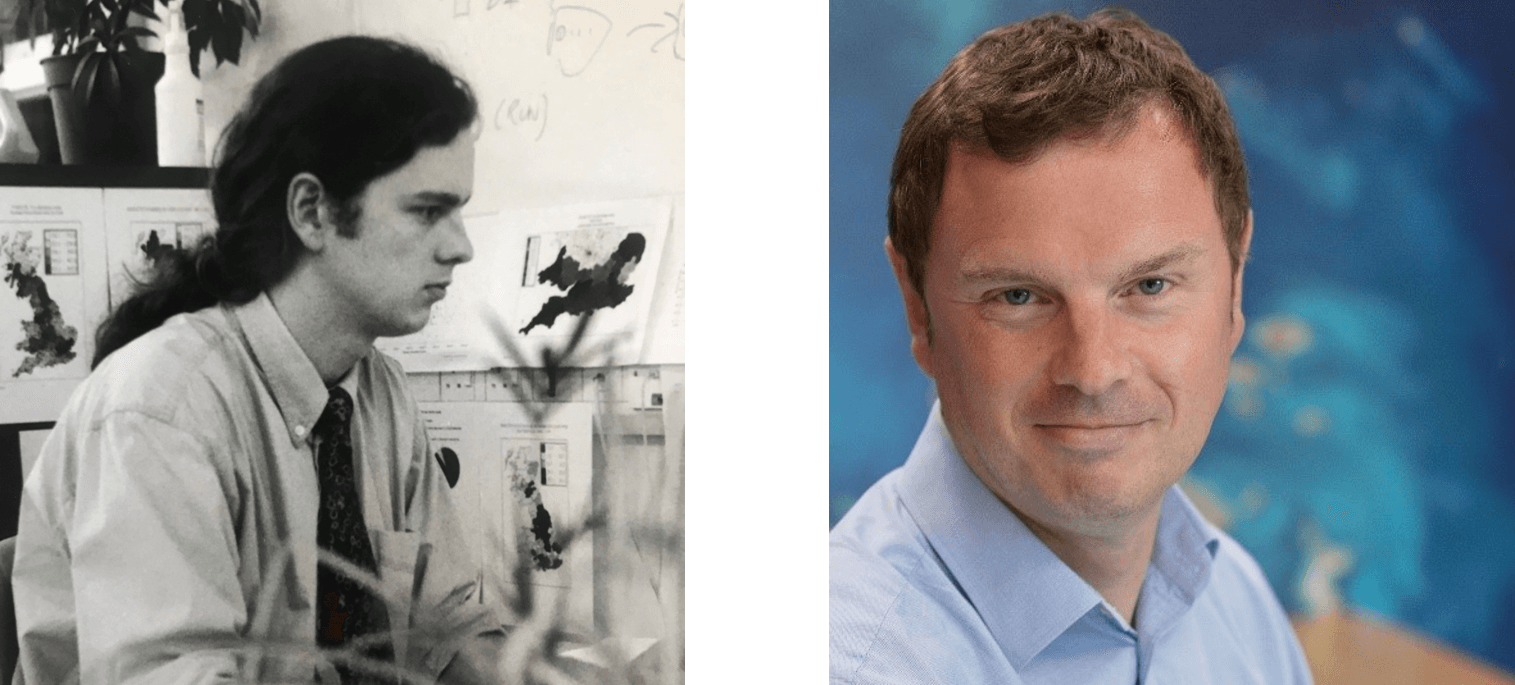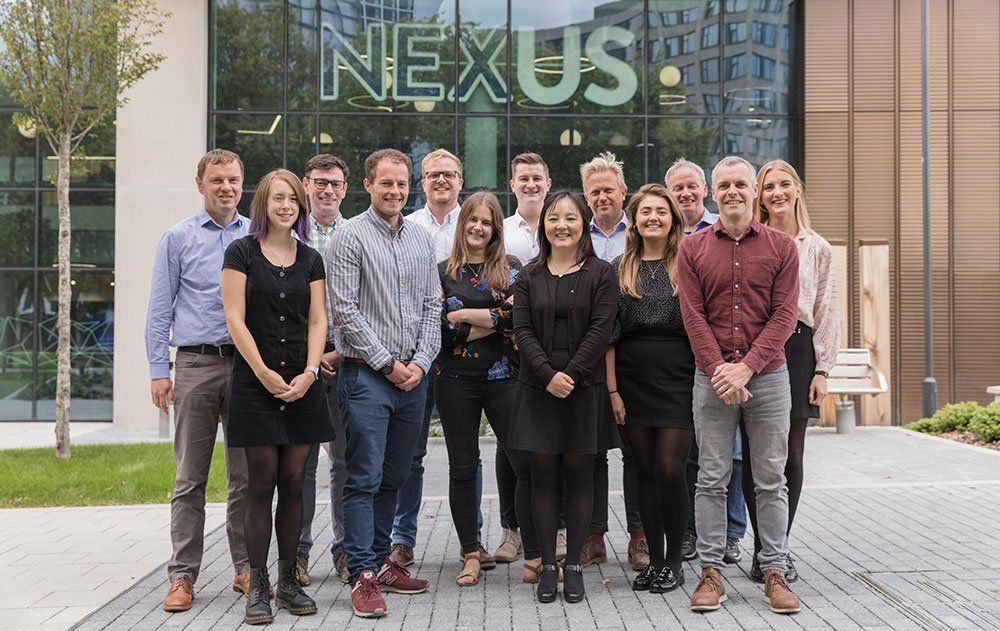GMAP Reflect on 30 Years of Change
25th October 2019
Over 30 years ago, GMAP's groundbreaking location planning strategies created a industry that has become an embedded concept in business decision making. Following a management buyout, GMAP is trading independently again as GMAP Analytics and has gone full circle by moving back onto the University of Leeds campus! To celebrate this, and our website going live, we have written an overview of how GMAP, location planning methods and the retail environment have changed in the last three decades. Enjoy and let us know what you think!
GMAP
Then
GMAP, (Geographical Modelling and Planning), was founded as a location planning consultancy in 1988 at the University of Leeds, by the School of Geography and the Innovation Service. The ground-breaking Spatial Interaction Models that were developed by the academic founders Clarke and Wilson provided retailers with insight, far beyond the capabilities of the more commonplace Geographical Information Systems (GIS) approaches. As such, GMAP was instrumental in establishing the consultancy and in-house location planning industry that exists today.
Now
Fast forward 31 years, GMAP continues to help businesses in the retail, automotive and forecourt sectors to grow, rationalise and optimise their networks in over 60 countries. Over the years, the GMAP team has been a subsidiary of numerous companies. Following a management buyout from TransUnion (previously Callcredit) by Matt Cawcutt and John Chesworth, GMAP started trading independently again as GMAP Analytics. In May this year GMAP returned to its roots on the University of Leeds campus in the
Nexus Innovation Hub.
Location Planning
Location planning is an embedded principle in retail decision-making. Retailers recognise the importance of ‘location, location, location’ for enabling their brands to grow successfully and sustainably whilst preventing harmful investment decisions. Developing the optimal retail network can help a brand access the right consumers and provide more brand awareness than any other marketing campaign due to the ‘halo effect’ whereby online sales increase within the vicinity of a store. The original location planning concept was about generating spatial understanding using GIS, but it has and continues to be enhanced by the development of increasingly sophisticated modelling techniques.
The Changing Location Planning Methods
Just as GMAP has transformed, the location planning methods themselves have altered with advances in computing technology, more powerful analytical tools and the exponential increase in data availability from the likes of ‘Big Data’, Open Source and mobile data (‘mData’). Paper-based data approaches seem unfathomable given what can be facilitated with today’s technology.
In the 1980s, GIS mapping tools were only available on expensive computing systems. However, GIS applications are no longer as expensive or difficult to use, meaning they are not solely used by GIS experts. The simplification of GIS software packages, such as GMAP’s MVPLUS
tool, means that geographical analysis can be conducted in-house across multiple departments, such as location planning, property acquisitions, or even marketing teams.
In the early days, GMAP employed interns to create digital map layers from paper copies. Thankfully today this is in the past as mapping software has revolutionised the industry. On-going technological advances, such as automation and machine learning, allow us to provide our clients with ever more efficient, varied and insightful consultation. As no two projects are the same, our Spatial Interaction Models are built with the capacity to include bespoke elements, such as different retail formats, future developments, customer datasets and additional datasets, including the CAMEO geodemographic consumer segmentation. We also offer RetailVision, which is our off-the-shelf product that is built from our comprehensive Store Locations dataset and retail modelling techniques. RetailVision provides an extensive depiction of the UK retail market, with retail centre revenue estimations that can be used to rank and evaluate retail destinations. With the substantial changes within the industry, GMAP’s location planning methods have been adapted and will continue to develop to ensure our clients remain resilient to the increasing pressures in today’s retail environment.
GMAP's Computing - Then & Now
The Changing Retail Environment
As GMAP and location planning methods have changed over the past 30 years, so has the global retail environment. The late 1980s and early 1990s saw the shift away from traditional high street retailing to ‘Out of Town’ retail parks and centres. The noughties signified rapid technological developments and with it, the internet and online shopping.
The prevalence of the internet in our homes and pockets has instigated our consumer demand for convenience. As a result, retailers have had to evolve. This has happened in a few ways; supermarkets have gone full circle and re-created smaller format, local stores on the high street and on petrol forecourts, whilst non-grocery retailers have evolved from being purely ‘Bricks and Mortar’ to focussing revenues in developing their online presence. This latter adaptation has resulted in a media frenzy reporting the ‘Death of the High Street’. However, one major feature that online shopping can’t replace is the physical experience, which remains a consumer priority. In fact, 80% of sales transactions still happen in store; therefore, many retailers have adopted ‘omni-channel’ business models. It is recognised that online sales increase within the vicinity of a store, known as the ‘halo effect’. Therefore, the right locations can provide more brand awareness than any other marketing campaign.
Changes have been witnessed across all aspects of retail. Car dealers are exploring alternative retail formats in key shopping destinations, such as the interactive showroom-style FordStore within Next in Manchester’s Arndale Centre. Similarly, ‘big box’ homeware stores are moving into retail centres, for example Ikea are locating smaller stores in city centres. Forecourt retailers are also having to focus on providing convenience through adding store offerings, whilst their business models are more frequently shifting to wholesale operations and mergers.
A Key Retail Trend - Then & Now
Businesses are under increased pressure to get a good return of investment, navigate consumer behaviours and build a retail network that can lead to the long-term success of their brand. Nobody wants to be the next victim to the retail apocalypse, meaning Location planning has become more important than ever!
No matter your sector, GMAP Analytics can help you navigate the changing retail landscape and the optimal way to locate your network. Visit www.gmap.com to learn more about us and get in touch at info@gmap.com or call us on +44 (0) 113 306 1585
for more information on how we can help you make informed geographical decisions.
The GMAP team look forward to hearing from you!
New Paragraph











